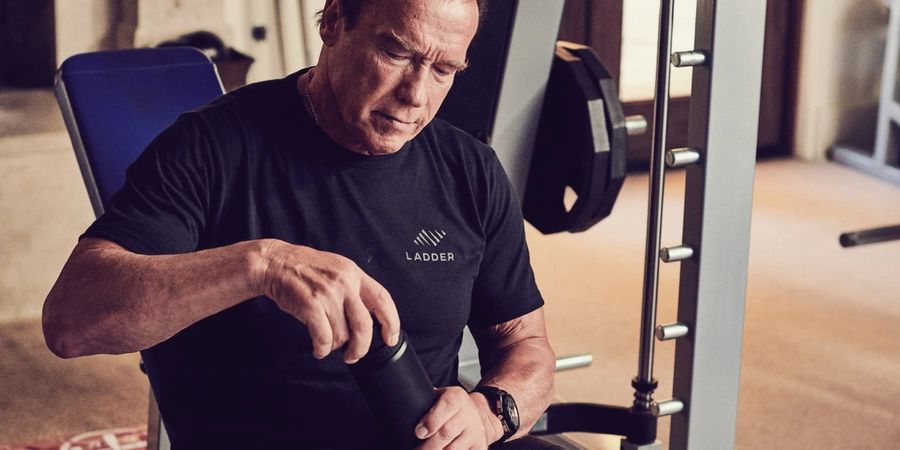
Want to Flex Like a Bodybuilder? Check Out Arnold Schwarzenegger's Back Workout
By Andrew Heffernan
A few weeks before the 1975 Mr. Olympia contest, Arnold Schwarzenegger stood before the mirror at the historic Gold's Gym in Venice, California. With fellow bodybuilder Ken Waller looking on, Arnold turned his back to the mirror and raised his arms in the iconic double-biceps pose. As Arnold squeezed and flexed expertly — he practiced posing for up to two hours a day — Waller took in the mountain range of muscle before him: sculpted sinew here, deep crevices there, veins fanning out across the whole expanse.
“Looks like a road map back here," Waller said. “There are fingers all over it."
Arnold Schwarzenegger knows a thing or two about building a big back. That road map didn't come as easily as his massive chest or arms, but strong points don't make the bodybuilder. It's about balance among every muscle group. That meant Arnold had to put in serious time and effort on his back to ensure that it kept pace with his chest and arms.
Here's how he did it. The back workout below comes from Arnold's pre-contest training: It's long, tough, and not for the faint of heart or the short on time.
But if you want a challenge for your back muscles that's bound to push them to the limit, and you want a taste of the training the Oak went through in his heyday, look no further. Try it out as written to spur your muscles into new growth, or break it into two or more shorter workouts you can perform throughout the week.
Fuel your workouts and recovery with trusted and tested supplements. Shop all premium LADDER supplements.
The Arnold Back Routine
The back muscles are pulling muscles. They help you draw an object toward your body — or your bodyweight towards a stationary object. Exercise physiologists divide these moves into vertical pulls (think chin-ups) and horizontal pulls (think of rowing a boat).
Bodybuilders, old-school and new, make a similar distinction, but since their focus is on muscles rather than movement, they categorize these movements differently. “When you train the back, you need the width, and you need the thickness," says Arnold. Vertical-pulling exercises are considered “width-building" exercises because they emphasize the lats (located on either side of the back), and horizontal-pulling moves are considered “thickness-building" because they emphasize the traps and rhomboids in the middle of the back.
All upper-back exercises are variations on these two types of movements. And whether your focus is building maximal muscle or better strength and function, you'll need to include variations of both. That's what this workout does.
Directions: Perform the exercises as prescribed in the order shown. Rest one to two minutes between sets.
1. Wide-Grip Pull-Up
5 sets of 8-12 reps
- Hang at arm's length from a pull-up bar with your hands wider than shoulder-width. This is the starting position.
- Keeping your core engaged, pull your chest to the bar.
- Pause, and then reverse the movement to return to the starting position.
Pro tip: Can't get 8 reps? Do shorter sets between other exercises until you've completed a total of 30 reps. Once you can hit that, work up to 50 reps total — at which point sets of 8-12 will be doable.
2. T-Bar Row
5 sets of 8-12 reps
- Straddle a T-bar and take an overhand grip on the handles (no T-bar? Use a double-D handle on the end of an Olympic bar in a landmine setup).
- Keeping your back flat, core engaged, arms straight, and knees bent slightly, raise the bar a few inches off of the ground. This is the starting position.
- Keeping your elbows tucked, pull the weight up explosively towards your torso, taking care not to hit yourself.
- Pause, and then reverse the movement to return to the starting position.
Pro tip: You can also substitute a bent-over barbell row. Arnold often rounded his lower back while performing this move but don't follow his lead. Minimize your risk of injury by keeping your core engaged and back flat.
3. Single-Arm Dumbbell Row
4 sets of 8 to 12 reps per arm
- Place your left knee and left hand on an exercise bench, holding a dumbbell in your right hand at arm's length toward the floor. This is the starting position.
- Keeping your core engaged, back flat, and elbow tucked, pull the dumbbell to the side of your torso.
- Pause, and then reverse the movement to return to the starting position.
- Do all of your reps, switch sides, and repeat.
Pro tip: Between sets, grab something stable (a railing, a cable column) at chest height with your right hand. Step back with your right foot, fold your torso forward, and stretch the side of your torso for 30 seconds. Repeat on your other side. You can perform this stretch during rest periods for any back exercise — or any time you want to relieve some tension.
4. Close-Grip Lat Pulldown
4 sets of 8 to 12 reps
- Attach the double-D handle to a pulldown machine and sit in the seat, holding the handles at arm's length above you.
- Keeping your core engaged, back flat, and elbows tucked, pull the handles to the top of your chest.
- Pause, and then reverse the movement to return to the starting position.
Pro tip: Squeeze your shoulder blades together as you pull the handles to your chest.



